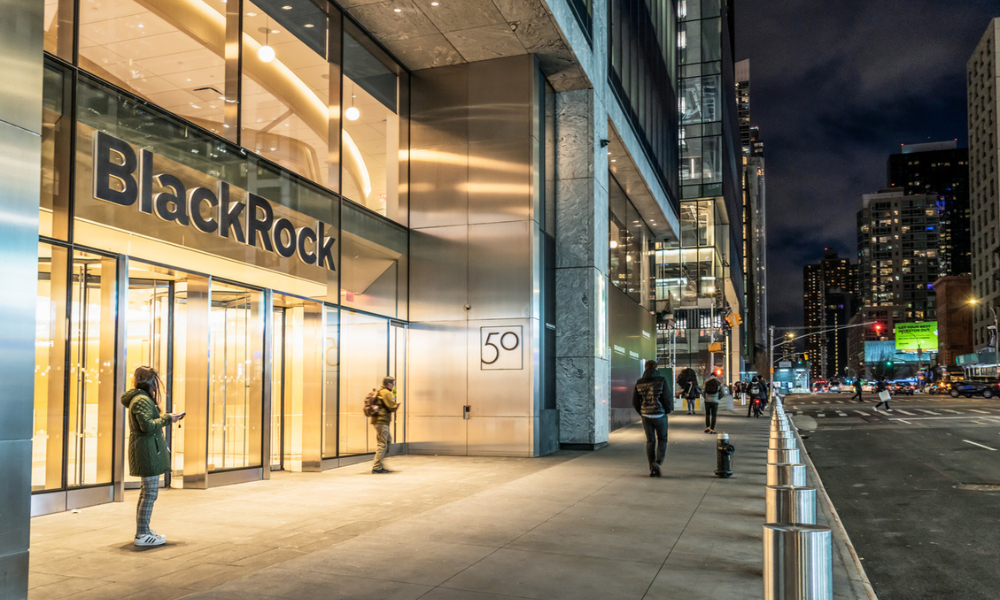

Researchers working inside a unit of BlackRock Inc. estimate that a reform of public financial institutions could free up as much as $4 trillion in additional spending to help emerging markets tackle the fallout of climate change.
In a paper published on Tuesday, the BlackRock Investment Institute laid out how it thinks a reform of multilateral development banks (MDBs) such as the World Bank might allow them to make better use of the capital at their disposal. Doing so would play a key role in filling the so-called climate financing gap that emerging markets currently face, BlackRock said.
The proposal comes just days before the COP28 climate summit gets underway in the United Arab Emirates. BlackRock Chief Executive Officer Larry Fink, who skipped the 2022 summit in Egypt, is on this year’s COP advisory committee and will be joining the talks in person in Dubai. The world’s largest asset manager has identified the global transition to a low-carbon economy as one of five “mega forces sweeping markets and economies.”
But nations experiencing the fastest increase in emissions are also those facing the biggest hurdles when it comes to accessing private capital. With that in mind, a key goal of the COP28 talks will be to come up with so-called blended finance models, whereby private investors get incentives to join public institutions in committing capital to climate projects, without the terms becoming too onerous for debtor nations.
For now, private investors face several financial disincentives, BlackRock said. “High levels of public debt in many EM countries makes attracting foreign direct investment into energy or climate resilience sectors more difficult, we think.”
MDBs, which were first created to help rebuild a war-ravaged Europe in the 1940s, are being reimagined for the era of climate change. Prominent voices calling for reform include US Treasury Secretary Janet Yellen, French President Emmanuel Macron and Barbados Prime Minister Mia Mottley, with demands for a meaningful overhaul set to play a major role during COP28 talks.
The authors of the BlackRock report argue that MDBs need to be able to “backstop initial losses” that are likely to be associated with emerging market infrastructure investments, particularly climate-related projects. Fink has previously suggested that institutions like the World Bank would be most useful in the transition to clean energy if they acted like insurers that reduce risk for private investors.
“Transition investment needs across EM are enormous — and not close to being met,” BlackRock said. “Public funding has been ineffective in mobilizing private capital at scale — and that’s where the MDBs and public financial institutions can play a role.”
Emerging-market economies will make up over half of energy demand and carbon emissions by 2050, and are set to “define the speed and shape of the global transition,” BlackRock said. “As proposed reforms take shape, we see the potential for private capital to find new investment opportunities as part of filling the EM climate financing gap.”
To date, most of the world’s climate investments have been concentrated in the US, Europe and China. Annual clean energy investment in emerging markets has flat-lined since 2015, hovering around $250 billion per year, according to the International Energy Agency. Overall, climate-related investment needs across emerging markets are 17-24 times bigger than recently estimated public commitments, BlackRock estimates.
As part of its risk-diversification recommendations, BlackRock suggests that greater MDB participation in AAA-rated bond issuance could also crowd in private capital. Existing grants or loans are “too targeted on funding individual projects” and that money would be better used to “mitigate risks more broadly,” it said.
Another proposed model is “puttable green bonds,” whereby MDBs would commit to buy the bonds if their price falls to a preset level, reducing investor risk and helping to cut issuers’ borrowing costs, BlackRock said.
To be sure, MDB reform alone isn’t expected to close the EM climate investment gap and BlackRock highlights private sector innovation as another key priority. Successful examples include debt-for-nature swaps, BlackRock said, whereby governments refinance their debt and allocate a portion of the savings to environmental projects.
BlackRock describes its $4 trillion projection as an “upside scenario” of capital that could be released on top of its base-case scenario, which envisages an annual $1.1 trillion in emerging-market climate spending by 2050. However, if reforms “prove less durable or effective” than hoped, BlackRock estimates that investment levels could end up falling by about $50 billion a year.
“If substantive reforms do not materialize, investment opportunities in low carbon energy infrastructure will be more limited,” BlackRock said. A scenario in which emerging markets are left behind “could mean more physical climate risk and damages for all economies, but especially EM countries, possibly slowing growth even further,” it said.

While industry statistics pointing to a succession crisis can cause alarm, advisor-owners should be free to consider a middle path between staying solo and catching the surging wave of M&A.

New joint research by T. Rowe Price, MIT, and Stanford University finds more diverse asset allocations among older participants.

With its asset pipeline bursting past $13 billion, Farther is looking to build more momentum with three new managing directors.

A Department of Labor proposal to scrap a regulatory provision under ERISA could create uncertainty for fiduciaries, the trade association argues.

"We continue to feel confident about our ability to capture 90%," LPL CEO Rich Steinmeier told analysts during the firm's 2nd quarter earnings call.
Orion's Tom Wilson on delivering coordinated, high-touch service in a world where returns alone no longer set you apart.
Barely a decade old, registered index-linked annuities have quickly surged in popularity, thanks to their unique blend of protection and growth potential—an appealing option for investors looking to chart a steadier course through today's choppy market waters, says Myles Lambert, Brighthouse Financial.
